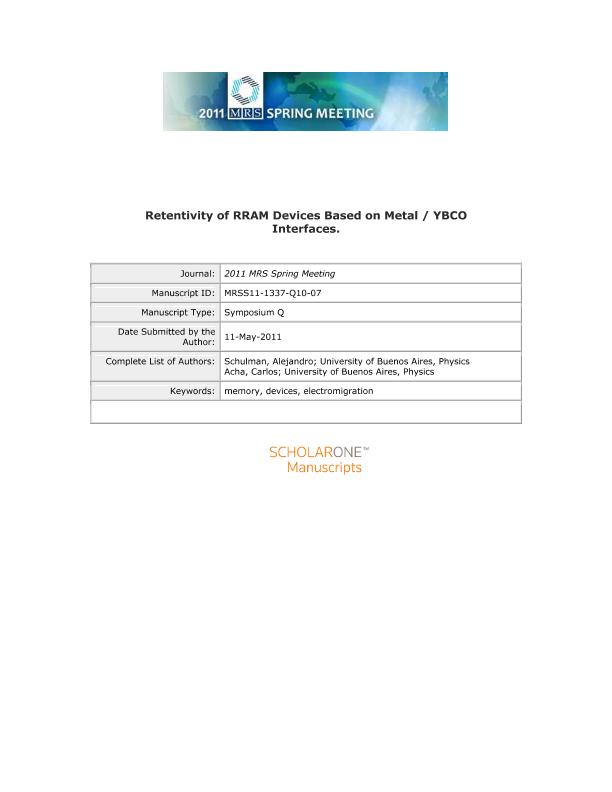Artículo
Retentivity of RRAM devices based on metal/YBCO interfaces
Fecha de publicación:
05/2011
Editorial:
Cambridge University Press
Revista:
Mat. Res. Soc. Symp. Proc. (pittsburg)
ISSN:
0272-9172
Idioma:
Inglés
Tipo de recurso:
Artículo publicado
Clasificación temática:
Resumen
The retention time of the resistive state is a key parameter that characterizes the possible utilization of the RRAM devices as a non - volatile memory device. The understanding of the mechanism of the time relaxation process of the information state may be essential to improve their performances. In this study we examine RRAM devices based on metal / YBCO interfaces in order to comprehend the physics beneath the resistive switching phenomenon. Our experimental results show that after producing the switching of the resistance from a low to a high state, or vice versa, the resistance evolves to its previous state in a small but noticeable percentage. We have measured long relaxation effects on the resistance state of devices composed by metal (Au, Pt) / ceramic YBCO interfaces in the temperature range 77 K - 300 K. This time relaxation can be described by a stretched exponential law that is characterized by a power exponent n = 0.5, which is temperature independent, and by a relaxation time τ that increases with increasing the temperature. These characteristics point out to a non-thermally assisted diffusion process that could be associated with oxygen (or vacancy) migration and that produces the growth of a conducting (or insulating) fractal structure. © 2011 Materials Research Society.
Palabras clave:
Memoria
,
Retentividad
,
Interfaz
,
Electrónica de Óxidos
Archivos asociados
Licencia
Identificadores
Colecciones
Articulos(IFIBA)
Articulos de INST.DE FISICA DE BUENOS AIRES
Articulos de INST.DE FISICA DE BUENOS AIRES
Citación
Schulman, Alejandro Raúl; Acha, Carlos Enrique; Retentivity of RRAM devices based on metal/YBCO interfaces; Cambridge University Press; Mat. Res. Soc. Symp. Proc. (pittsburg); 1337; 5-2011; 103-107
Compartir
Altmétricas




